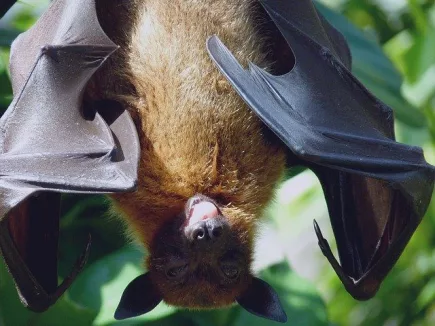Tag: ACE2
Preprint: Coronaviruses with a SARS-CoV-2-like RBD isolated from bats of the Indochinese peninsula
“We found that the RBDs of these viruses differ from that of SARS-CoV-2 by only one or two residues”
Here we show that such viruses indeed circulate in cave bats living in the limestone karstic terrain in North Laos, within the Indochinese peninsula. More...
UK SAGE: Lab studies suggest that the N501Y spike protein mutation increases binding to rat and mouse ACE2 leading to viral replication
A report issued by the UK government’s Scientific Advisory Group for Emergencies (SAGE) found the likelihood that a variant of concern (VOC) that has arisen in humans could infect a rodent and then spread among the animals is high. More...
Recombination and lineage-specific mutations linked to the emergence of SARS-CoV-2 coronavirus
In this work, we reconstruct the evolutionary events that have accompanied the emergence of SARS-CoV-2, with a special emphasis on the RBD and its adaptation for binding to its receptor, human ACE2 (hACE2). More...
WHO report on coronavirus pandemic origins published
Arguments in favour [of a lab leak] : Although rare, laboratory accidents do happen, and different laboratories around the world are working with bat CoVs. More...
Scientists find evidence that novel coronavirus infects the mouth’s cells
An international team of scientists has found evidence that SARS-CoV-2 infects cells in the mouth. More...
The South African and Brazilian coronavirus variants can now infect mice
Here we show that unlike the initial virus, VOCs are able to infect common laboratory mice, replicating to high titers in the lungs. More...
Circulating SARS-CoV-2 variants B.1.1.7, 501Y.V2, and P.1 have gained ability to utilize rat and mouse Ace2 and altered in vitro sensitivity to neutralizing antibodies and ACE2-Ig
Here, we first investigated cross-species receptor usage of multiple SARS-CoV-2 variants that emerged during the pandemic. More...
White-tailed deer are highly susceptible to SARS-CoV-2 infection
“Here we demonstrated that white-tailed deer, an animal species in which the angiotensin converting enzyme 2 (ACE2) – the SARS-CoV-2 receptor – shares a high degree of similarity to humans, are highly susceptible to infection. More...







